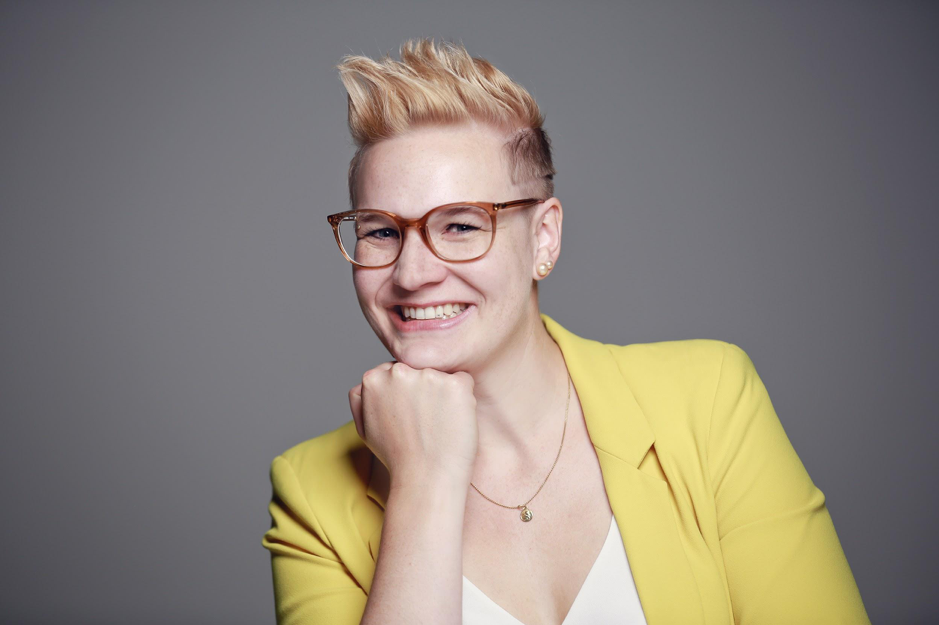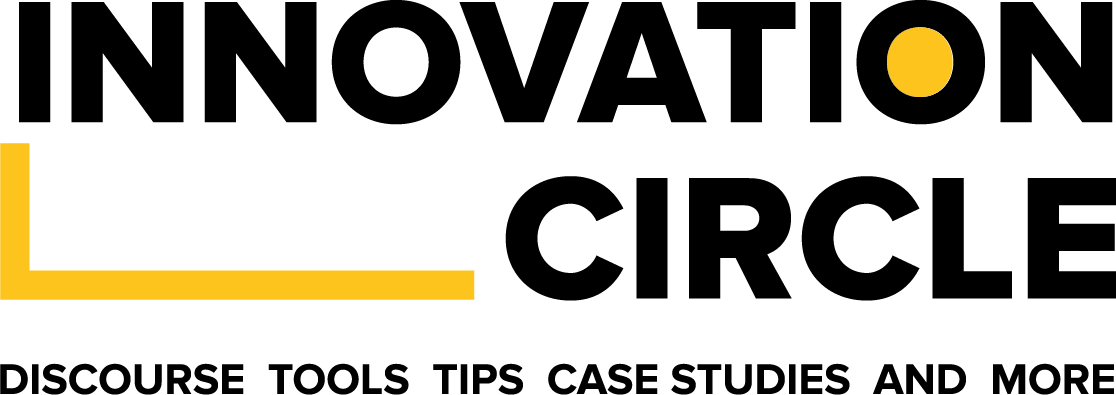
A Conversation with Stephanie Batliner, User Experience Designer, BBC
We had an interesting conversation Stephanie Batliner a User Experience expert at BBC. She shared thoughts about the value of design, gave some insights why she enjoys working at the BBC and talked about her side hustle in design.
Please tell us why you became a designer?
It’s hard to remember why exactly I became a designer but it’s easy to explain why I stayed on my career path. Over the years I understood that design was more than aesthetics. Design is no longer an afterthought, design is a conversation starter. I want to help to start difficult conversations and to create a positive impact.
“Design is no longer an after-thought, design is a conversation starter.”
How does a User Experience Designer find herself in BBC?
Working at the BBC is a unique opportunity to design for everyone. We are a strong team of about 200 designers, writers, research, information architects and accessibility specialists. We all work on different digital experiences but we are collaborative as a whole, exchanging knowledge, sharing learnings and striving for the same goals. At our heart we’re united by a human-centered approach.
The BBC exists to serve the public with the mission to inform, educate and entertain. It’s a place for me to learn and grow. From shaping screens to choosing the right words, it’s all about being useful, usable and user-friendly. My daily work challenges me with many topics from understanding accessibility needs, responding to the ever-changing needs of our audience to tackling unconscious bias. It’s a responsibility to create digital experiences which are used and enjoyed by millions. Lots of people in the UK interact with our content every week and it feels great to be part of something that reaches so many. I love working with the people at the BBC.
Are there ways you think News agencies can leverage on design to improve on the way information is delivered to people?
News agencies can use design methods to understand their user’s needs. Transparency is one of the topics which I’m very keen on. Matching essential information with the right people and timing to empower local communities. We all have a different truth. Fake news is strong and every one of us consumes from different sources. It makes it very hard to have empathy for each other. Especially on social media, every user is in their own bubble, their own world, their own reality. The same event can be portrayed completely opposite depending on the user’s view, location, and beliefs. Also, giving more people a voice so we don’t listen exclusively to the majority. We need to see people in jobs and in leadership positions that represent all of us. News has to be accessible for everyone. Good design solutions always empower people.
Information is something people have to get on a daily basis to produce great results in their various fields, are there new ways you think Information could be disseminated but is yet to be considered (outside the traditional means)?
Information and communication will always be an essential part of how human beings interact with each other. Today we see online and offline communication. Most of the time we use a combination of both. I’m sure that the tools and ways of information flow will change in the future. Because we are always trying to make things better to optimise our time. I’m hoping for the next generation that we will find a way to spread useful information to empower people, to save lives, and to take care of our planet. We need a system in place which protects us from information overflow and misleading information. How that is going to work will be up to us, we have all the creativity we need.
How would you say companies can create a positive impact for their local society and their employees using design?
Design methods give companies useful tools to ask questions, create empathy and get an understanding of the problems. Sometimes there are underlying problems which are not visible from the surface. Design can help dig deeper and get a more authentic picture. Companies can use design as a way to build bridges, a way to connect people and to work together. In order to create a positive impact it’s essential to include the people you want to help. If you want to improve things for your local society then start a dialogue. Find out where the real problems are and work together to find creative solutions. Involving people in the process helps not only to create acceptance around change but it also is a way to ensure that you don’t miss the target and come up with a design solution which isn’t solving the right problem. A local society can have many different problems but it’s up for them to decide which is the most urgent one.
“Companies can use design as a way to build bridges, a way to connect people and to work together.”
In your free time you’re working on a side hustle around health and social design, what new ways do you think design could be applied to improve on how healthcare services are being delivered?
In an ideal world the future is about preventive care. We are all patients sometimes. We all deserve to be healthy. Nonetheless, the reality is that healthcare access is limited. Design will play a crucial role in creating non-judgemental healthcare services for everyone. Healthcare services should be safe, accessible and affordable, no matter the circumstances.
“Design will play a crucial role in creating non-judgemental healthcare services for everyone.”
We need to work towards a solution where the patient is aware of who has access to what kind of information from the patient’s folder. Transparency can create trust and give the user more control of what happens with sensitive data.
In healthcare trust is the hardest thing to earn and the easiest thing to lose. We live in a multicultural world and different bodies have different needs. Healthcare should be designed in a way that we understand that women have different needs than men. There is a lot more research about the male body compared to the female body. And that shouldn’t be the norm anymore. Our gender identities include a lot more than the one or the other. Trans people have different needs. Non-binary people have different needs. When we design for a wider target audience we need to understand that those needs are not only medical. It’s as important to focus on mental health and use inclusive and non stigmatising language. We can do a lot better with that.
When we design for a wider target audience we need to understand that those needs are not only medical.
We use design often to make an experience more personalised. In healthcare, I feel that aspects which make it more personal, like being accepted as who we are or giving us a choice, are being overlooked sometimes. Healthcare isn’t as inclusive as it could be an unconscious bias against ethnic minorities is still quite common. I’m hoping that we can use design to strengthen healthcare in a way that it gives people more understanding and more choice. That will lead to more trust and transparency. We need to educate, share information and empower people so that they can be preventative.
What companies are innovating around their user experience you feel other companies can learn from?
I am passionate about healthcare and social design. There are two companies that follow work ethics and approaches which are very close to my heart.
IDEO.org is a nonprofit design studio. They design products and services alongside organisations committed to creating a more just and inclusive world. Their innovations all have one thing in common which is the creative approach of human-centred design. It’s a process that starts with the people you’re designing for and ends with new solutions that are tailor made to suit their needs. Human-centered design is all about building a deep empathy with the people you’re designing for; generating tons of ideas; building a bunch of prototypes; sharing what you’ve made with the people you’re designing for; and eventually putting your innovative new solution out in the world.
“Human-centered design is all about building a deep empathy with the people you’re designing for…”Asktia.com is on a mission to enable every female to achieve their own definition of optimal health through science-backed information, access to high-quality care, and community. I noticed Tia because they asked their future patients on Instagram to help them design their patient form. Discrimination in healthcare can start as early as filling in a patient form, where for example your gender identity isn’t listed as an option to choose from. Including your clients in the process, getting feedback and being able to make those twists is exactly the level of detail which creates the big change.
What books, articles or materials can you share to business leaders, to help them better improve the experience of their users?
The way teams are set up and the way people think and collaborate has a massive impact on how the experience for their user’s will look like. Work culture is as important as the design process. Some of my favourite books around creativity, collaboration and innovation are: Creativity Inc. by Ed Catmull, Give and Take by Adam Grant, Creative Confidence by David Kelley and Tom Kelley, Leaders Eat Last by Simon Sinek and Mindset by Carol Dweck.
“The way teams are set up and the way people think and collaborate has a massive impact on how the experience for their user’s will look like”
What #innovationmoment have you experienced in your career so far? (We define an #innovationmoment as something you’ve been a part of or have witnessed that has been incredibly life-changing and impactful to others) Can you share?
Besides my day job, I am especially interested in using my design skills in sexual health. Conversation topics around sexual health bring another layer of complexity with it. I conducted interviews with a diverse group of people living with herpes for my Master’s dissertation: “A human–centred concept to tackle the stigma of the Herpes Simplex Virus“. The aim of this initiative is to transform the negative image of STDs/STIs into an accepted conversation topic in our society.
My knowledge is based on interviews, online research, and my personal experience as a white, privileged, and straight woman. I am aware that my views are limited and to include everyone, it’s essential to interact, listen and emphasis.
“Interdisciplinary thinking and collaboration is the secret ingredient necessary for innovation.”
This initiative has been incredibly life-changing for myself, my health has improved massively since I decided to speak up about it. It is a way of lending my voice to people living with herpes until they are ready to find their own. Ever since I am on a mission to create a world where taboo topics are no longer awkward and silent. Design can help to make complex topics more relatable and playful instead of keeping them in the dark.
#innovationmoment
I conducted interviews with a diverse group of people living with herpes for my Master’s dissertation: “A human-centred concept to tackle the stigma of the Herpes Simplex Virus”. The aim of this initiative is to transform the negative image of STDs/STIs into an accepted conversation topic in our society.
This initiative has been incredibly life-changing for myself, my health has improved massively since I decided to speak up about it. It is a way of lending my voice to people living with herpes until they are ready to find their own. Ever since I am on a mission to create a world where taboo topics are no longer awkward and silent. Design can help to make complex topics more relatable and playful instead of keeping them in the dark.

